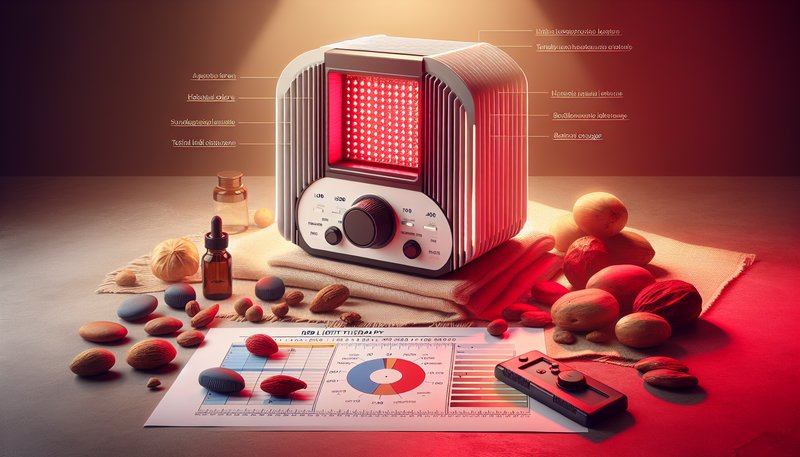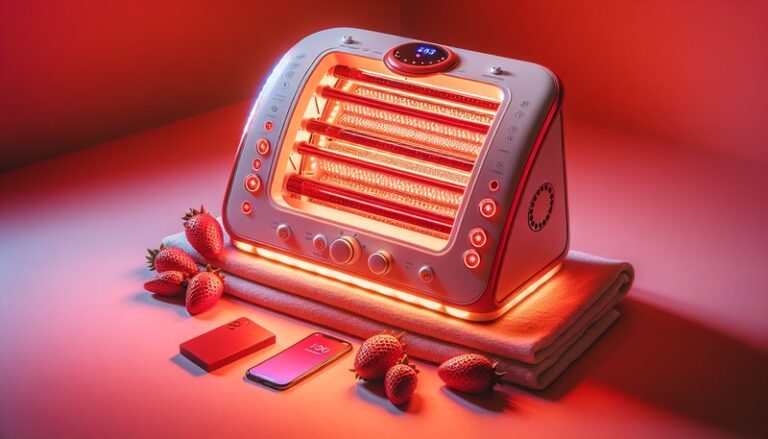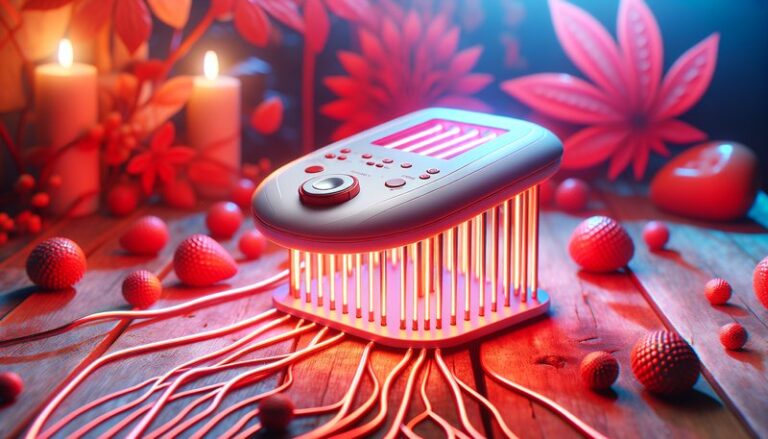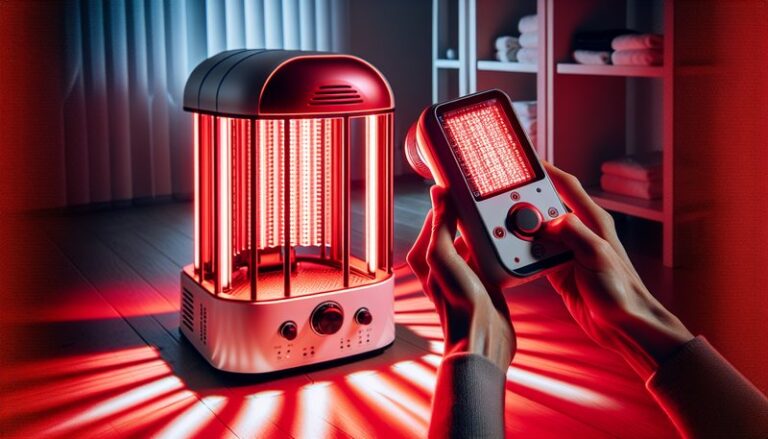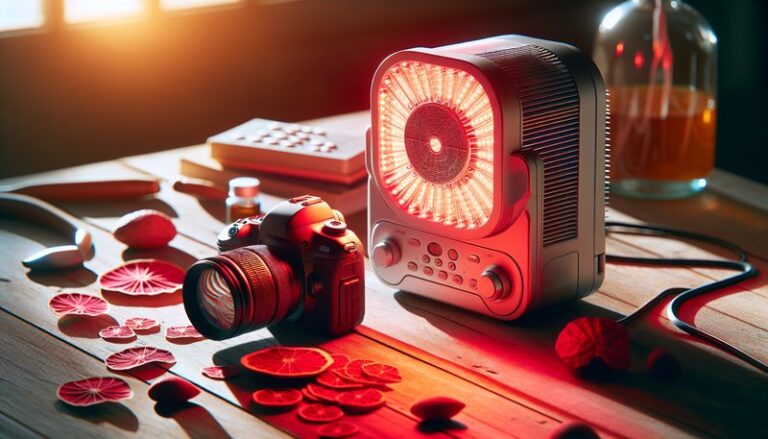Does Red Light Therapy Boost Testosterone?
Is there a natural way to enhance testosterone levels using light?
In recent years, red light therapy (RLT) has gained popularity for its purported health benefits, including its potential role in boosting testosterone levels. This article explores the science behind red light therapy, its advantages, its relation to testosterone production, and what you need to know before considering it as a treatment option.
Key Takeaways
- Red light therapy may help enhance testosterone levels through increased energy production in cells.
- While initial studies are promising, more comprehensive research is needed to establish a definitive link between RLT and testosterone elevation.
- Alternative options for naturally boosting testosterone exist, including lifestyle changes, diet, and exercise.
What is Red Light Therapy?
Red light therapy is a treatment that involves exposure to low levels of red or near-infrared light. This non-invasive therapy is believed to stimulate healing and reduce inflammation, thereby improving overall health. RLT primarily works by penetrating the skin and affecting the mitochondria, the powerhouse of cells, leading to enhanced cellular energy production, known as ATP (adenosine triphosphate).
How Red Light Therapy Works
When red light is absorbed by the skin, it triggers cellular processes that can promote repair and regeneration. This is particularly significant for conditions related to skin health, muscle soreness, and recovery. The therapy can be delivered through various devices, including LED panels, handheld devices, or in professional settings like dermatology clinics.
What are the Benefits of Red Light Therapy?
There are several benefits associated with red light therapy, particularly in the realms of health, wellness, and physical performance. Below are key advantages that have been supported by emerging research.
Increased Cellular Energy Production
One of the fundamental benefits of red light therapy is its ability to enhance ATP production in cells. This boost in energy can lead to improved muscle performance and recovery, potentially benefiting those looking to increase their physical activity.
Enhanced Recovery and Reduced Inflammation
RLT has shown promise in reducing symptoms of inflammation and promoting healing in various tissues. Athletes and active individuals often use it to expedite recovery after workouts, while also alleviating pain and soreness.
Potential Hormonal Benefits
Some hypothesis exists around red light therapy’s capacity to influence hormonal balances, including the production of testosterone by stimulating Leydig cells in the testes. This is particularly intriguing as testosterone is crucial for many physiological processes in both men and women.
Skin Health Improvements
RLT has been associated with enhanced skin health, helping to reduce acne, scars, and the effects of aging. Healthy skin can indirectly contribute to overall wellness, including improved confidence and mood.
Is it Possible to Boost Testosterone with Red Light Therapy?
The notion that red light therapy might increase testosterone levels relies on preliminary findings, with some small studies suggesting a potential beneficial effect. However, while the concept is intriguing, it’s important to consider whether concrete evidence supports this claim.
What are the Advantages of Boosting Testosterone with Red Light Therapy?
There are several possible advantages linked to using red light therapy as a means to boost testosterone unconventionally:
- Natural Method: For those seeking non-pharmaceutical alternatives to enhance testosterone, RLT offers a non-invasive option.
- Minimal Side Effects: Unlike many testosterone-boosting medications that can have significant side effects, RLT is generally considered safe.
- Convenience: With various devices available for at-home use, RLT can easily be incorporated into daily routines.
What are the Disadvantages of Boosting Testosterone with Red Light Therapy?
Despite the potential upsides, there are challenges and limitations to consider:
- Limited Research: Most evidence supporting RLT’s efficacy in raising testosterone is preliminary, necessitating further research for validation.
- Cost of Equipment: High-quality RLT devices can be costly, which may deter some individuals from trying this therapy.
- Time Commitment: Consistent use is often required to see any potential benefits, demanding a commitment that can be difficult to maintain.
What are the Things to Consider Before Trying Red Light Therapy?
Before embarking on a red light therapy regimen, individuals should consider several important factors:
Consultation with a Healthcare Provider
Before beginning RLT, consulting with a healthcare professional is crucial, especially for those with pre-existing conditions or hormonal imbalances.
Device Quality and Safety
The effectiveness of RLT can depend significantly on the quality of the device used. It’s essential to choose reputable brands and models for safety and efficacy.
Discover the story in Does Red Light Therapy Treat Acne?
Regularity of Treatments
To potentially see positive results, establishing a consistent treatment schedule is necessary. Evaluating personal lifestyle and commitments will help in maintaining this routine.
What are the Alternatives to Boosting Testosterone?
Fortunately, there are various options available for those looking to boost testosterone levels aside from red light therapy:
See the full review Red Light Therapy Usage
Lifestyle Changes
Adopting a healthier lifestyle through regular exercise, improved sleep quality, and stress management can significantly influence testosterone levels.
Nutrition
Certain foods are linked to supporting testosterone production, such as lean meats, fish, avocados, and nuts. Ensuring an adequate intake of vitamins and minerals like zinc and vitamin D can also be beneficial.
Natural Supplements
Various natural supplements, such as fenugreek or ashwagandha, are thought to assist in boosting testosterone levels naturally. Consulting with a healthcare provider before starting any supplementation is advisable.
Hormone Replacement Therapy (HRT)
For individuals with significantly low testosterone levels, hormone replacement therapy might be an option. This should always be administered and monitored by a healthcare professional.
Conclusion: Is it Recommended to Try Red Light Therapy for Boosting Testosterone?
While red light therapy presents several potential benefits for overall health and well-being, its effectiveness specifically for boosting testosterone requires further research. As a non-invasive method, it may be worth exploring, particularly in combination with other lifestyle strategies aimed at naturally enhancing testosterone levels. However, due diligence and consultation with a healthcare provider are essential to ensure safety and efficacy.
Frequently Asked Questions
Can red light therapy be harmful?
Red light therapy is generally safe when used as directed. However, overexposure can lead to skin irritation or discomfort. It’s important to follow the guidelines provided with the therapy devices.
How long does a typical red light therapy session last?
Sessions typically last between 10 to 20 minutes, depending on the specific device and intended area of treatment. Always refer to the manufacturer’s instructions for guidance.
How often should red light therapy be applied?
For potential benefits, most sources recommend sessions 3 to 5 times a week. Regularity can enhance the chances of positive outcomes.
Is there an age limit for using red light therapy?
Red light therapy is suitable for adults of all ages. However, children and pregnant women should consult with a healthcare provider before use.
What are other health conditions that red light therapy may improve?
In addition to potential testosterone boosts, RLT is explored for its effects on skin conditions, muscle recovery, reducing inflammation, and even improving mood and sleep quality.
